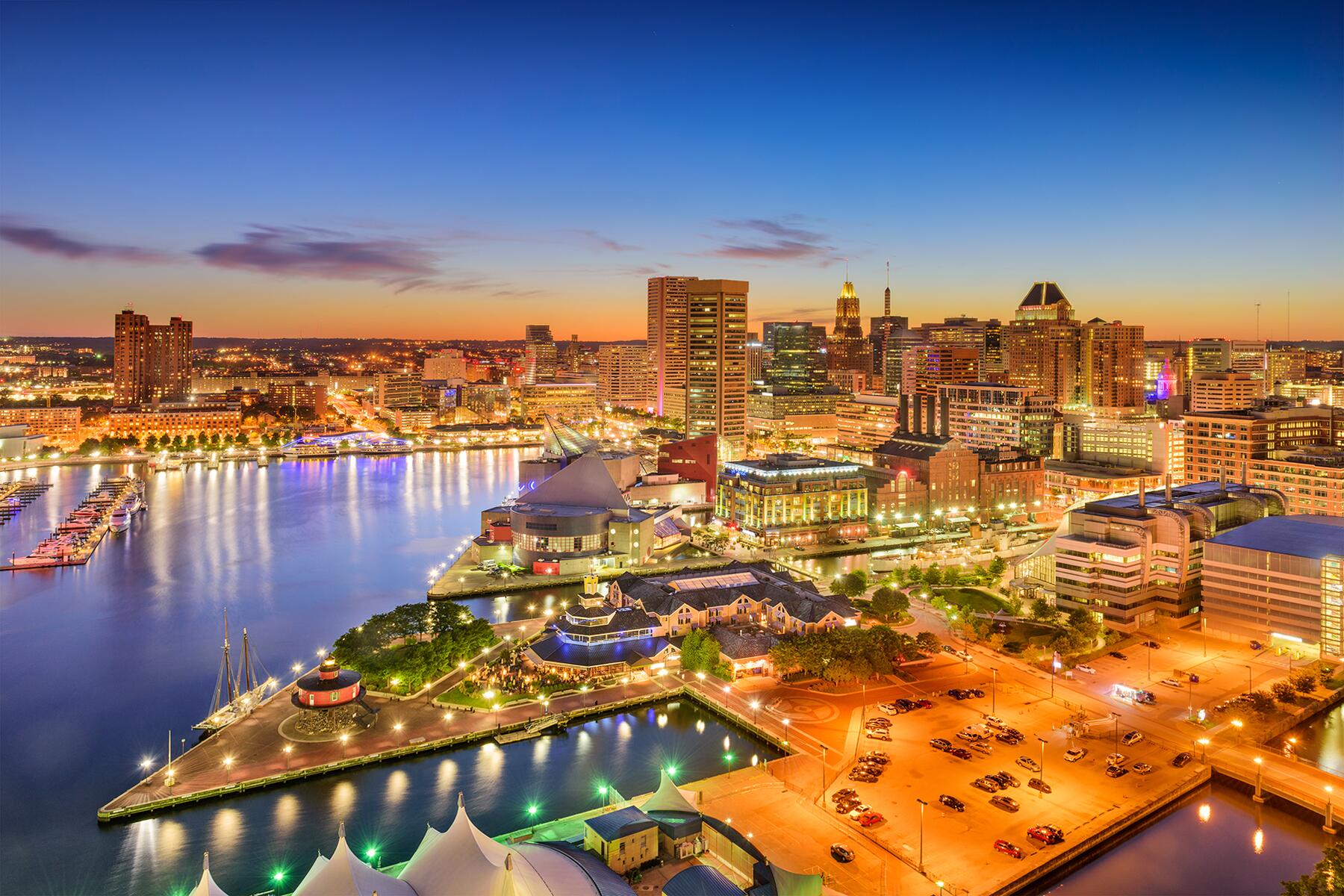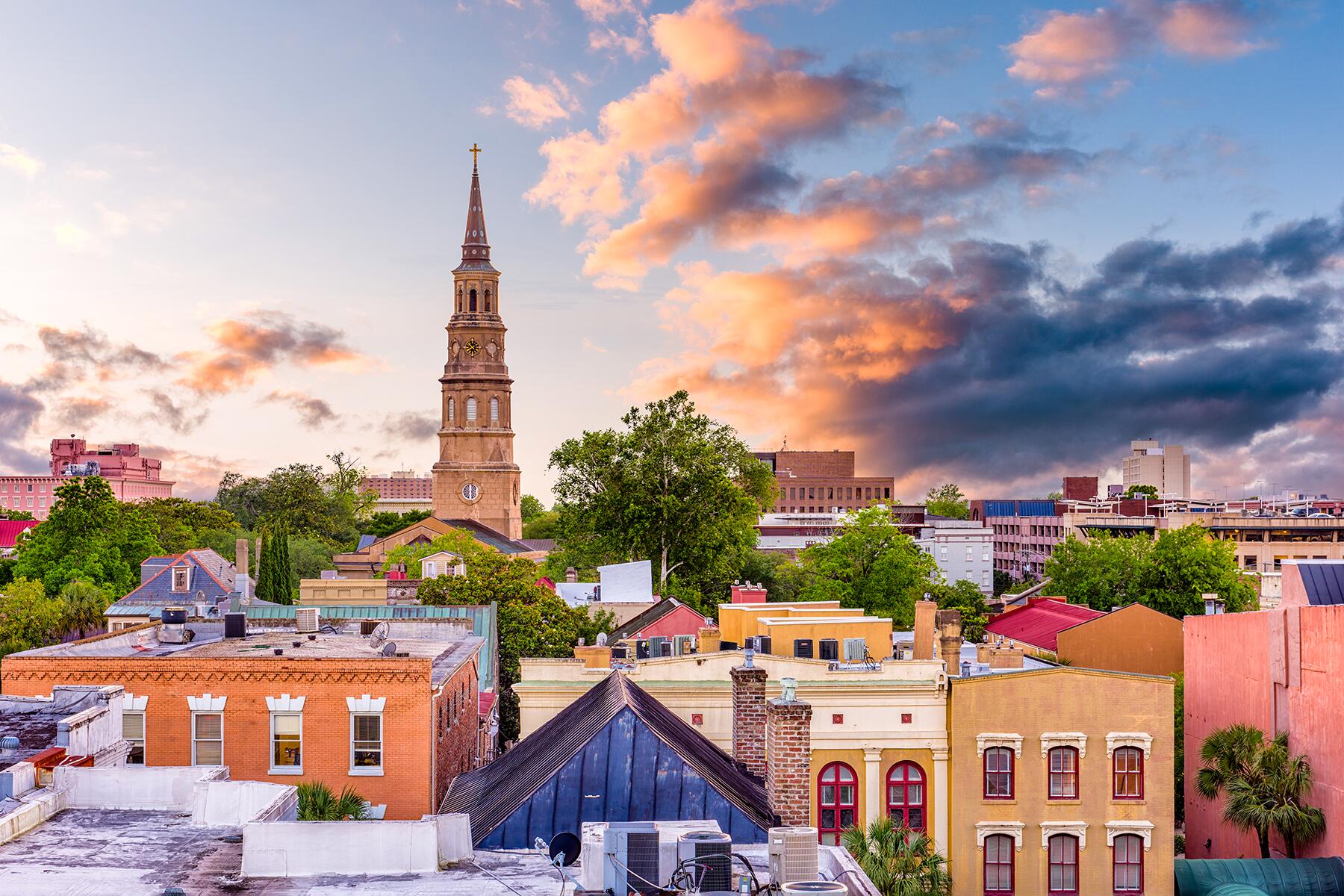Frankly Charleston Black History Tours offers a new and honest take on the history of this popular South Carolina destination.
Warning: This article includes descriptions of racial violence.
“Confederate Disneyland.” That’s how Frank Williams describes Charleston, South Carolina. With that opening salvo, guests on his Frankly Charleston Black History Tours know they’re in for a wild ride, a presentation of the city’s past, unlike anything they’ve heard before. That’s the point.
“I got into an industry I felt ought to be ashamed of itself,” Williams told guests on one of his walking tours I had joined in October 2022.
He used to drive the bus for other history tours before securing a guiding license of his own. Twice a day, six times a week, he’d listen to guides tell visitors lies about “happy slaves” and how the “aristocracy had built Charleston,” pointing to white men and enslavers like Nathaniel Russell, William Aiken, and Joseph Manigault.
Within the first 10 minutes of a Frankly Charleston tour, Williams sets the record and folks straight. He makes clear that those men didn’t build a thing. In fact, they didn’t lay a single brick or drive a single nail. Rather, it was Black men and women who built Charleston.
Recommended Fodor’s Video
Simple, inarguable, memorable insights like this from Williams turn perceptions on a dime and leave guests with something more valuable than a string of names and dates: a new way of seeing the world and a lesson in how storytelling can often be conflated with history.
“I’m trying to talk about people; I’m not trying to talk about wealth,” Williams explains. “America wants history to reflect capitalism, not the plain, common people.”
Hidden in Plain Sight
Those aren’t carriage steps between the street and sidewalk, as many visitors to Charleston are led to believe. From their height and construction, Williams reveals them to be auction blocks. There’s one near the corner of Chapel and Alexander Street in an otherwise nondescript neighborhood where residents pass by daily on their way to the grocery store.
Humans once stood upon these slabs to be sold like objects. You can still see them in Charleston if you know where to look and know what you’re looking for. You can read about slavery, watch documentaries, and hear Williams describe it, but there’s a distance marked by time. That space closes once you place your hand on the very stone where people of color were sold, feeling its weathered texture, imagining the crowd—standing where you’re standing—bidding on human flesh. The history sucks the barbaric practice into your chest with an intimacy you may have never felt before.
The Peacock Gate at the corner of Meeting and Ann Street near the Charleston Visitor Center can be easily passed by without so much as a second glance. No marker details its significance. It’s not featured on other tours. Williams spends a full 30 minutes here, and guests hang on his every word as he introduces Phillip Simmons, a Black man and an enslaved person, so skilled as a metalworker he was used to construct over 500 gates around the city. The tight curls of his ironwork are Simmons’ signature. No one could produce a tighter, finer curl. If you come across a gate and can see through the curl, it’s not from his hand.
At the Peacock Gate, Williams guides visitors through the symbolism. The upside-down heart, which represents sankofa, a term originating with the Indigenous people of what is now Ghana in west Africa, is generally translated as remembering to go back and get what you forgot and learn from the past. Feathers stand in for the waves over which slave ships sailed. Fish equate to churches. Solid rods reflect good times; twisted rods hard times.

The stories Williams shares come from his own research. He didn’t learn this in school, and he’s definitely not repeating what he heard while driving for the “whitewashed” history tours that can plague this city. He reads voraciously and networks with authors, researchers, and historians in an effort to continually keep learning and uncovering fresh details.
“We kept slavery on the plantation all my life; I didn’t know anything about city slaves,” Williams admits.
In Charleston, the lavish plantations ringing the city are known for their history of chattel slavery; lesser known is how the institution thrived in town. How plantation owners rented the skilled artisans among the enslaved to property owners in Charleston or, in fact, to the city itself based on their particular talents and what jobs needed to be done. The plantation owners were compensated for the rental.
In 1800, there were nearly 10,000 enslaved people from west and central Africa and 1,000 free Black people living in the city of Charleston, 53% of the population.
A Tragic Finale
Williams informs guests about Africans and African Americans’ contributions to Charleston. He does so with folksy, provocative, and opinionated charisma.
No two tours are the same due to William’s insatiable appetite for knowledge, which continues to shape and inform his tours. He encourages guests to ask questions and press him on the facts, making each tour a unique experience, depending on how the conversation evolves.
What doesn’t change is where the tours begin–at the visitor center–and where they end, the Mother Emmanuel AME Church. AME stands for African Methodist Episcopal. Here, on June 17, 2015, a 21-year-old white supremacist who wanted his actions to incite a race war entered the chapel, joined the congregation in a Bible study for roughly 45 minutes, then pulled a .45 caliber handgun and murdered nine parishioners. Black church members welcomed the white man into their sanctuary and were killed for their kindness.

Scant memorialization exists at the church in remembrance of the victims. Williams shares those details underneath a sign letting you know Mother Emmanuel resides along Calhoun Street, so named for John C. Calhoun.
Calhoun was a one-time member of the U.S. House of Representatives from South Carolina, a U.S. Secretary of War, and a Vice President. Calhoun was also an enslaver. He was a virulent racist, white supremacist, and ardent defender of slavery to his dying day in 1850. In 2020, Charleston removed a statue of Calhoun, but no effort is being undertaken to change the street name here in “Confederate Disneyland.”
Beyond Frankly Charleston
Williams leaves tour guests with recommendations for suggested reading in Black history and a list of Black-owned restaurants to enjoy while in town. These include Hannibal’s Kitchen, Gillie’s, and Bertha’s Kitchen for soul food. There’s also an option for vegan diners: Vined.
Charleston has become a major foodie destination. Rodney Scott began cooking whole hog barbecue over wood coals in middle school. In 2017 he opened Rodney Scott’s BBQ and, that same year, was named the James Beard Foundation Outstanding Chef Southeast.
Charleston is a chameleon, visually stunning and seductively enchanting with its delicious food, intoxicating cocktails, and dazzling architecture; still, there’s a past here no one should forget. The first shots of the Civil War were fired from Fort Sumter in Charleston Harbor. Tours are available. And at the Aiken-Rhett House as well, which Williams considers a “must-see” for an accurate retelling of Antebellum Charleston from the perspective of both enslavers and enslaved people.
For a Charleston plantation experience that’s been appropriately updated to reflect on its horrific past, visit Middleton Place, where the staggeringly beautiful home and gardens are interpreted to give equal footing to the enslaved people who labored, not just the namesake family who enslaved them.
Historic Mills House, the iconic pink hotel in the heart of downtown, has undergone a full property renovation completed in the fall of 2022 and stylishly puts guests steps from the Gibbes Museum of Art, scores of art galleries and antique shops, restaurants, boutiques, and famed Rainbow Row.
Charleston is a charmer, but don’t let that alluring Southern charm totally distract you from the horrors that have occurred here.





